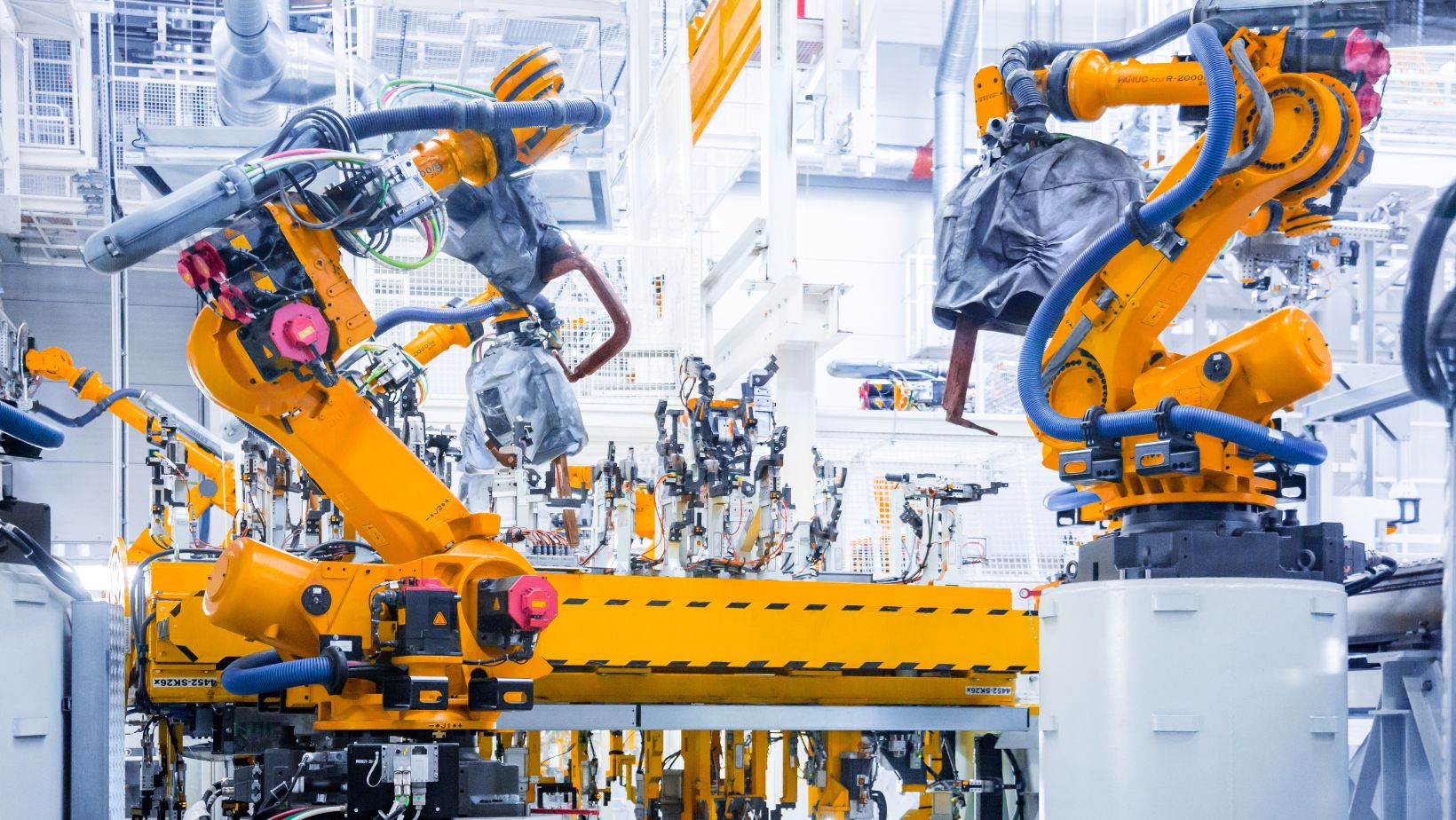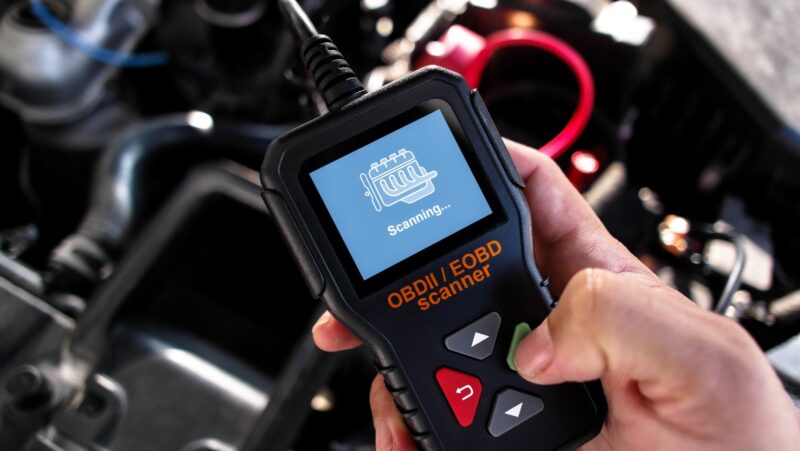
Electronic product manufacturers waste twenty cents of every dollar, creating a major efficiency gap in the industry. This waste opens up important opportunities to improve. Lenovo showed this by cutting their rework in half through analytical insights.
We created this complete guide to manufacturing optimization based on these challenges. Our analysis of over 3 billion data points in electronic parts online supply chains revealed prime areas where data engineering can optimize production efficiency. The guide walks you through implementing proven strategies—from data collection systems to quality control and supply chain operations.
Setting Up Data Collection Systems
Data collection is the foundation of successful electronic product manufacturing. Manufacturers who use automated data gathering systems see their error rates drop by up to 85% compared to manual methods.
Key Manufacturing Metrics To Track
Four types of manufacturing data optimize operations. Operational metrics like Overall Equipment Effectiveness (OEE), maintenance records, and cycle times show how production lines perform. Quality metrics such as defect rates and inspection results help teams spot issues early. Electronic component distributor supply chain metrics track inventory and supplier performance, while customer metrics measure buyer feedback and purchasing patterns.
Choosing The Right Sensors
Today’s manufacturing facilities depend on well-placed sensors that act as their digital eyes and ears. Temperature sensors watch machine health by detecting heat changes in rotating parts. Pressure sensors check fluid and gas levels that keep equipment running, while torque sensors find component wear through force monitoring. MEMS sensors handle precise movement tracking and work well in high temperatures and vibrations.
Sensor placement depends on your production environment’s needs. The best data comes from sensors placed near output points. Your network setup determines how industrial IoT gateways should connect – through Wi-Fi or cables.
Data Storage Requirements
Three core components make up a reliable data storage system. The hardware layer has physical devices like sensors and Human Machine Interface terminals. Network connectivity needs industrial Ethernet switches or fiber optic cables that work 99.9% of the time. Secure data storage systems use redundant servers that switch over automatically if problems occur.
A unified namespace (UNS) keeps data accurate. This software layer gives teams one source of truth and processes data immediately. A backup and disaster recovery (BDR) plan protects against system failures by saving copies to other locations automatically.
Quality Control Through Data
Electronic manufacturers need precision-driven quality control systems to detect and prevent defects before they disrupt production.
Our analysis shows that quality monitoring systems reduce production costs and minimize product launch delays substantially.
Real-tTime Defect Detection
Advanced image processing and deep learning technology helps manufacturers spot defects during component assembly. These systems capture images of electronic components between pickup and mounting and analyze them in less than five milliseconds. Quick analysis helps identify defects before components merge with circuit boards.
Edge algorithms near mounting machines provide instant insights, unlike traditional delayed responses. These systems can analyze up to 3000 images per second on a Tesla T4 GPU. Defect detection algorithms take about 1.5 milliseconds per component and handle roughly 20 components per second.
High-resolution cameras and sensitive sensors on the SMT line create large data streams. Process Lens HD, an intelligent SPI system, identifies relevant areas on PCBs through 2D scanning and measures them in 3D. This system detects:
- Solder paste deposits
- Adhesives
- Contaminants
- Dust particles
Predictive Quality Analysis
Machine learning helps perform root cause analysis faster and detect potential issues early. These systems track quality performance live, which helps manufacturers spot trends and areas of concern. Product failures during testing prompt predictive quality tools to find the cause based on upstream data patterns.
Manufacturing environments use specific anomaly detection algorithms. These algorithms spot outliers in individual data variables and alert when they detect potential defects. Manufacturers can take immediate action by:
- Adjusting process parameters
- Implementing maintenance procedures
- Conducting targeted inspections
Automated sensors and alerts help manufacturers maintain high-quality standards. Predictive models analyze historical production data, sensor readings, and past defect patterns to spot potential issues. This approach reduces downtime and scrap rates measurably.
Advanced sensors and IoT devices continuously track critical parameters like temperature, pressure, and vibration. Manufacturers get instant alerts about deviations from current standards, which allows quick adjustments to maintain optimal production quality.
Supply Chain Optimization
Data-driven supply chain management is the lifeblood of successful electronic product manufacturing. Systematic analysis and immediate monitoring help manufacturers optimize their operations in many dimensions.
Inventory Tracking Systems
Manufacturing inventory tracking systems give precise, immediate visibility into stock levels throughout the supply chain. These systems keep detailed records of current stock levels and track material movement to maintain optimal inventory control. Companies can track items before use or shipment by using barcode scanning and serial number tracking.
Supplier Performance Monitoring
A supplier’s performance needs clear performance metrics and regular assessments. Electronic part suppliers must align with business goals and include quality, delivery time, cost, responsiveness, and compliance. Systematic evaluation helps businesses to:
- Identify and alleviate potential risks
- Streamline processes
- Track pricing strategies
- Ensure competitive cost management
Performance reviews at set intervals help measure if suppliers meet their targets. Technology solutions also automate data collection and analysis to ensure accurate tracking of key performance indicators.
Demand Forecasting Models
Advanced demand forecasting uses machine learning algorithms to analyze big datasets and predict future requirements accurately. These models combine historical sales data, market trends, and external factors to create precise predictions. To cite an instance, quantitative regression with gradient-boosted trees (QRGBT) has shown better accuracy in forecasting demand for new electronic products.
Machine learning models have produced remarkable results. Samsung Electronics boosted its forecasting accuracy by analyzing data from sources inside and outside the company. Like in Samsung’s case, other manufacturers have cut forecasting errors by 20-50% through advanced algorithms that spot complex patterns humans might miss.
Manufacturers should follow these steps to keep forecasting precise:
- Add immediate market intelligence
- Study seasonal fluctuations
- Watch component risk patterns
- Follow historical trends
These systems help manufacturers balance inventory levels, cut holding costs, and ensure products are available when needed. Predictive analytics also lets companies spot market changes and adjust production schedules.
Improving Production Efficiency
Electronic product manufacturers are reaching new heights in production efficiency through smart data analysis and automated systems. Companies that use machine learning algorithms and workflow automation have seen remarkable improvements in their operations.
Machine Learning For Process Optimization
Machine learning algorithms help manufacturers make sense of big production datasets to find patterns and optimize processes in real-time. These systems watch machinery performance continuously and detect subtle warning signs of potential breakdowns. Manufacturers who use ML-powered analysis have improved their fabrication, assembly, and test processes. This has cut test time by 20-25% and boosted daily production rates by 35%.
ML algorithms are particularly good at optimizing production schedules because they can analyze many factors at once. They process data about production times, yields, and costs to find ways to improve efficiency. Companies that use ML-driven process optimization have seen performance jump by more than 30%, and product yields reach 97%.
Automated Workflow Adjustments
Automated workflows cut out manual tasks and keep manufacturing operations running smoothly. These systems merge different components like Electronic Batch Records (EBR), Warehouse Management Systems (WMS), and Laboratory Information Management Systems (LIMS). This creates one unified platform for accurate decision-making.
Automated workflows offer clear benefits:
- Better batch processing with automated data capture
- Smart quality data management that reduces downtime
- Quick spotting of production issues for faster fixes
- Far fewer manual data entry errors
Automated systems can also tune operational settings based on up-to-the-minute conditions. Barcode scanners, weight sensors, and radio frequency identification tags trigger automatic restocking when supplies get low. This integration helps manufacturers optimize their factory floor space and remove old inspection stations.
ML algorithms work together with automated workflows to create a system that keeps improving itself. These technologies monitor equipment conditions constantly and enable timely maintenance. This prevents expensive disruptions in time-sensitive production schedules. The result? Manufacturers keep operations running smoothly and consistently hit their production targets.
Conclusion
Data engineering integration transforms electronic product manufacturing excellence. Our complete analysis shows manufacturers cut waste by 50% when they implement data collection systems, quality control measures, and supply chain optimization techniques.
Real-life results demonstrate these approaches work well. Companies that use automated data gathering systems reduce error rates by 85%. Their predictive quality solutions substantially lower downtime and scrap rates. ML-driven process optimization improves performance by more than 30%, and product yields reach 97%.
Smart manufacturers know success comes from integrating data collection, quality control, supply chain management, and production efficiency into one system. These components build on each other and create a reliable framework that improves continuously with measurable results.
Success depends on embracing these informed solutions. Companies that adopt complete data engineering strategies become pioneers in manufacturing excellence. They stay ready to tackle future challenges while keeping their efficiency and quality standards high.









